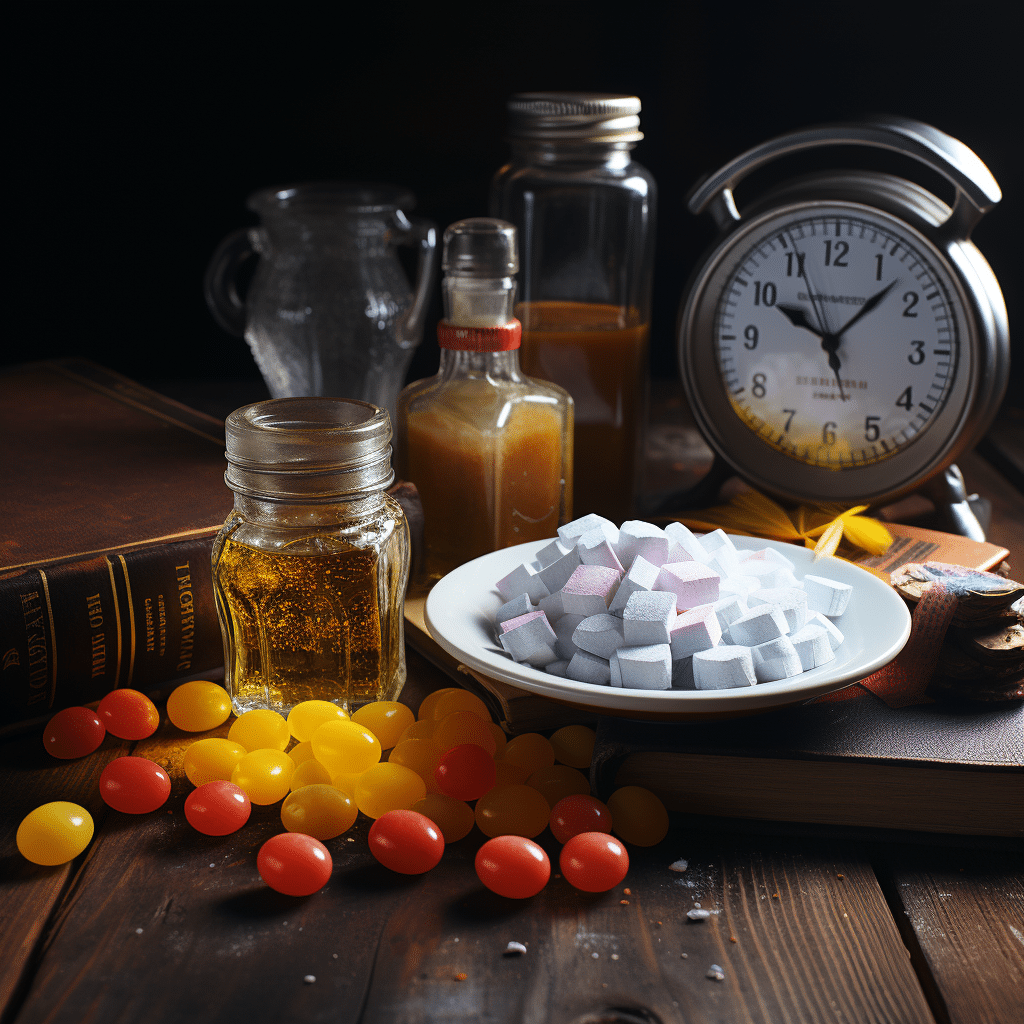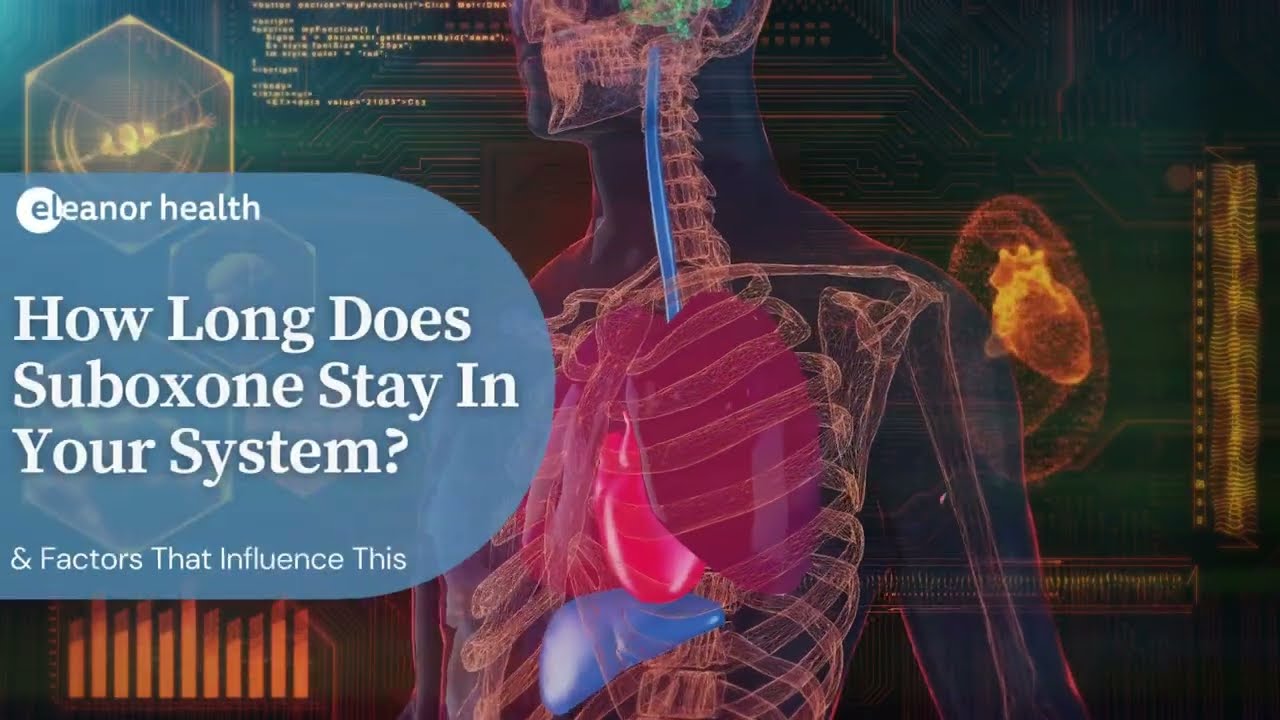In the complex and often heart-wrenching journey of addiction recovery, understanding the nuances of medication-assisted treatments like Suboxone can make a world of difference. For those who’ve witnessed the gut-wrenching battle of addiction in their children, knowledge is not just power—it is a lifesaver. At MothersAgainstAddiction.org, we provide a beacon of hope and a wealth of information for those grappling with the effects of opioid dependency, answering questions like “how long does Suboxone stay in your system?” with both scientific precision and compassionate insight.

How Long Does Suboxone Stay in Your System?

The Science Behind Suboxone: Duration of Buprenorphine in Your System
Suboxone is a name that is whispered in hushed tones in the alleyways of recovery, often misunderstood and cloaked in mystery. Simply put, Suboxone is a medication containing buprenorphine and naloxone that’s designed to treat opioid addiction. It’s like a lifeline tossed in the turbulent seas of dependency. Buprenorphine, the main player in this drug, latches onto the same brain receptors as other opiates, but with a gentler touch—a way of calming the craving without the clamor of full-blown opiate effects.
Chemically speaking, buprenorphine’s clinginess to opioid receptors is its superpower—and its staying power. Once ingested, its journey through the body is a complex tale of metabolism, primarily via the liver’s cytochrome P450 3A4, before waving goodbye through bile and urine.
Factors that play host to buprenorphine’s stay include:
These variables ensure that the duration of buprenorphine in the system is as personal as a fingerprint.

| Factor | Information |
|---|---|
| Drug Name | Suboxone (Buprenorphine and Naloxone) |
| Use Case | Medication for opioid use disorder; not optimal for chronic pain in patients without opioid use disorder |
| Average Half-Life | 38 hours |
| Half-Life Range | 25 to 70 hours after sublingual administration |
| Dosage Forms | Sublingual film or tablet |
| Pain-Relieving Effects | Yes, due to buprenorphine component |
| Metabolization | Primarily by the liver enzyme cytochrome P450 3A4 (CYP3A4) |
| Metabolites | Buprenorphine, Norbuprenorphine (active metabolite) |
| Excretion | Mainly via biliary system, with 10% to 30% excreted in urine |
| Detection in Urine | Up to 7 days or more, depending on various factors such as dosage and frequency of use |
| Detection in Saliva | Up to 3 days after last dose |
| Detection in Blood | Up to 2 days after last dose |
| Detection in Hair | Up to 90 days or more |
| Drug Interactions | Can interact with other medications, including sedatives and alcohol |
Understanding the Timeline: How Long Does Suboxone Block Opiates?
Imagine Suboxone as the bodyguard against opiates, blocking their entry with surprising efficacy. Its role in opiate dependency treatment shines bright—by dulling the glow of the opiate effect, it gives individuals the fighting chance they need. And it does this job earnestly, with the blocking act lasting anywhere from 24 to 60 hours post-dose, depending on numerous factors like dosage and the length of treatment.
Unraveling the puzzle of how long does Suboxone block opiates, one finds the interrelation of dosage and treatment duration playing pivotal roles. It’s not a one-size-fits-all scenario—each protocol is as unique as the individual it’s meant to protect.

Detection Windows: How Long Can Tests Detect Suboxone?
When it comes to drug testing, Suboxone can be somewhat of a Houdini, eluding simple detection methods at times. However, various tests have the sensitivity to catch buprenorphine in the act:
Understanding these windows is crucial not only for compliance but also for ensuring the safety of those in recovery, as showcased in real-world cases where timelines for detection have been critical.

From Usage to Clearance: Tracing Suboxone’s Presence in Your Body
Ready for a trip? Let’s trace Suboxone’s journey through the body—from the pivotal first dissolve under the tongue to the farewell tour. With the average half-life of buprenorphine pegged at around 38 hours—our elimination story involves a methodical wait as the compound divides and diminishes, waving goodbye via biliary excretion and, to a lesser extent, through urine.
Personal variables affecting this journey include:
Clinical Perspectives from Virtue Recovery Center
Virtue Recovery Center stands as a sentinel in the war against addiction. Clinicians from this haven of healing echo the importance of adhering to Suboxone treatment protocols. The therapeutic window for buprenorphine—the sweet spot where treatment and tolerance balance on a tightrope—is reinforced through patient education. It’s not just about how long does buprenorphine stay in your system; it’s about the ‘why’ behind every prescribed strip.
Potential Risks and What Happens When Treatment Guidelines Are Not Followed
Straying from the Suboxone yellow brick road can lead down some dark alleys. Misuse may open the door to unwanted guests like withdrawal symptoms or unexpected pain relief, both challenging the harmony of treatment. And let’s get real—if a patient decides to tango with opiates while Suboxone is still the DJ in their system, the results could range from underwhelming to dangerous.
Reporting deviant behavior is no snitch job; it can save lives. What happens if I report a drug dealer, you wonder? Well, you’ve possibly cut off a lifeline for misuse and safeguarded a community.
Beyond the Half-life: How Long Does Suboxone Influence Recovery?
How long does Suboxone stay in your system may be the question, but the answer to how long it influences recovery is more profound. Suboxone’s legacy can extend beyond its physiological presence, contributing to psychological stability and a favorable prognosis for long-term recovery. It’s like the aftermath of a good, hearty meal—satisfaction stretches beyond the last morsel.
Suboxone and Law Enforcement: Reporting Illegal Distribution
Weaving into the complex tapestry of addiction is the thread of law enforcement—where the battle against illegal Suboxone distribution is relentless. Reporting sketchy corner bar deals not only contributes to the greater good but it might also save the future of someone caught up in the throes of addiction.
Real-Life Stories: Individuals and Communities Impacted by Suboxone Duration
Tales of triumph and tribulation flood the archives of those whose lives have been touched by Suboxone. From the angst of mystery to the relief of revelation—understanding how long Suboxone stays active transforms lives and communities. It’s akin to pulling back the curtain to reveal the wizard, where once hazy pictures now spring into sharp focus.
Navigating the Future: Advances in Suboxone Treatment and Detection
The course of addiction treatment is ever-evolving, with advances in how long Suboxone and buprenorphine stay in the body changing the face of recovery. Researchers tirelessly fine-tune detection technology, while new therapies hint at an era where the elusive becomes the evident.
Conclusion: Embracing the Role of Time in Suboxone Treatment
How long does Suboxone stay in your system? The simple question with a complex, multi-layered answer. This understanding serves as the bedrock for compliant use, the linchpin for the safety of those in the healing embrace of Suboxone. Our parting thought is one of responsibility—not only for the safekeeping of the individual but that of the community’s welfare. Because at the end of the day, every hour counts in the noble endurance race of recovery.
How Long Does Suboxone Stay in Your System?
When diving into the nitty-gritty of Suboxone, a medication used to treat opioid addiction, one key question pops up: just how long does Suboxone stay in your system? Well, let’s peel back the layers of this onion with a bit of trivia – Suboxone is a blend of buprenorphine and naloxone. Talk about a dynamic duo! Buprenorphine is the main event, easing withdrawal symptoms and cravings, while naloxone is the trusty sidekick, guarding against misuse. Now, you might wonder, Does Suboxone get You high? The answer might surprise you – it’s designed to avoid that euphoric high associated with opioids, focusing on recovery.
Picture this: You’re in a sleek, luxury Lexus TX, cruising down the road to recovery. But, as smooth as the ride seems, there could be bumps along the way. If you’re feeling under the weather, it could be one of those sneaky signs your Suboxone dose is too low. And believe it or not, just like how we check if a car’s fuel mix is right, understanding the nuances between Buprenorphine Vs Suboxone can make sure your treatment plan is firing on all cylinders.
Fast Facts About Suboxone Metabolism
Switching gears, let’s chat about metabolism. Everybody’s body breaks down Suboxone differently, and a whole host of factors like liver enzymes zoom into play – it’s like each person’s metabolic engine has its own horsepower. And you may not believe it, but the testing process isn’t your run-of-the-mill Bup drug test; it’s almost as sophisticated as comparing an economy sedan to a high-performance sports car. Now, here’s a juicy tidbit – while unsweetened cranberry juice is known for its detox properties, it doesn’t necessarily speed up the elimination of Suboxone, despite the old wives’ tales. Go figure!
Suboxone in Pop Culture and Myth Busting
Our daily dose of trivia wouldn’t be complete without touching on popular myths. Take this one for a whirl: Can You snort Xanax? I mean, sure, you could – but it’s like trying to use a smartphone with gloves on; it just doesn’t work the way it’s supposed to. And while we’re at it, Suboxone’s presence in pop culture might be less flamboyant than Rocco Ritchie at a fashion show, but it’s there – in storylines, as a symbol of the journey many take towards a healthier future. Furthermore, folks often mistake Suboxone for a simple ‘pick-me-up, but let’s clear the air. Suboxone isn’t about the high; it’s about stability and bouncing back, kind of like Christian Potenza landing a voice acting role after a series of not-so-glamorous gigs. It’s all about the comeback, baby!
In the grand scope of things, Suboxone’s longevity in your system is a complex affair, woven into the fabric of personal health stories and cultural narratives alike. Whether you’re witnessing its impact on lives or debunking misconceptions, this medication carries more than meets the eye. And who knows? With the right knowledge, we might just steer clear of the pitfalls on this rocky road to recovery.

How long does Suboxone stay in your urine calculator?
– Well, hang tight, because figuring out how long Suboxone will wag its tail in your urine isn’t a walk in the park! But here’s the scoop: its key ingredient, buprenorphine, usually takes a curtain call anywhere from 25 to 70 hours after your last tango. So, expect it to linger in your system – and possibly your urine – for a few days after you wave goodbye to your last dose.
What is the half life of buprenorphine?
– The half-life of buprenorphine is kind of like a long-haul flight – it sticks around for quite a stretch, typically clocking in at around 38 hours. However, it does play a bit of hopscotch as it can range between 25 to 70 hours. So, don’t plan your parade quite yet; it hangs around in the system longer than your average guest.
Does Suboxone help with pain?
– Oh, does Suboxone help with pain? You betcha, but with a twist. It rolls up its sleeves to wrestle pain to the ground since it’s got buprenorphine, an opioid ace up its sleeve. But, heads up – it’s mainly a friend to folks who’ve danced with opioids before; not the first pick for your everyman without an opioid use background.
What are the metabolites of buprenorphine in urine?
– When it comes to the metabolites of buprenorphine showing up in your urine, the usual suspects are buprenorphine itself and its cool cousin, norbuprenorphine. They bolt the body’s scene mainly through the biliary system, but they do take a 10% to 30% detour through your pee. Sneaky, huh?
What can cause a positive drug test for buprenorphine?
– Now, hold your horses, because a positive drug test for buprenorphine could be a false alarm! Some other meds, like certain antivirals or antidepressants, could crash the party and set off the buprenorphine buzzer, even if you haven’t met the drug. Always worth a double-check!
How long can naloxone be detected in urine?
– Naloxone, that trusty sidekick in Suboxone, usually goes undercover in your urine much faster—typically taking a bow within a day or two. So, it’s like that one-hit-wonder song—here today, gone tomorrow.
How is buprenorphine detected in urine?
– Buprenorphine swings by your pee party as itself and its alter ego, norbuprenorphine, thanks to the breakdown moves of cytochrome P450 3A4 (CYP3A4). It’s kind of like a celebrity leaving behind an autograph – a telltale sign they were there.
When will buprenorphine wear off?
– Buprenorphine likes to overstay its welcome a tad, taking a leisurely stroll out of your system usually after that 25 to 70-hour window. So, you could feel its effects fade as soon as a day or linger for up to three, like houseguests who can’t take a hint!
Why is Suboxone being discontinued?
– Why is Suboxone being discontinued? Whoa, let’s not put the cart before the horse! As of my last check-in, there was no widespread call to cut the cord on Suboxone. If there’s a disruption, it might be a local issue, like supply hiccups. Always best to check with your provider or pharmacy for the skinny.
Is there a lawsuit against Suboxone?
– Is there a lawsuit against Suboxone? Well, it’s no secret that the legal world likes its drama, and Suboxone has had its days in court, with some suits alleging improper marketing and others. But remember, lawsuits are as complex as a Rubik’s Cube, so it’s not a one-size-fits-all answer.
What can I take for severe pain while on Suboxone?
– If you’ve joined the Suboxone squad but severe pain crashes your party, don’t throw in the towel. Your doc can prescribe alternative painkillers that play nice with Suboxone. Just don’t play doctor yourself – always get their blessing first!
Is Suboxone better for pain than methadone?
– Suboxone vs. Methadone in the pain relief rumble? It’s a bit of a seesaw. Methadone might throw a stronger punch for pain, but Suboxone could be a safer bet if you’ve tangoed with opioids in the past. It’s like comparing apples and oranges – both have their perks!
Does labcorp test for buprenorphine?
– Does LabCorp test for buprenorphine? Sure enough, if your doc scribbles it on the request form, LabCorp can play detective for buprenorphine. They’ve got the tools to sniff it out, so you can bet your bottom dollar they’ll find it if it’s there.
Does buprenorphine cause dark urine?
– Does buprenorphine cause dark urine? Now, don’t jump the gun—while it’s not common, any med can throw a curveball side effect. If your pee’s taken a turn for the dark and stormy, check in with your doc, it could be a sign to take a closer look at your health playbook.
Does buprenorphine have side effects on urine?
– Side effects of buprenorphine on urine? It’s not your usual suspect for funny business in your pee, but in the world of meds, it’s always a roll of the dice. If you notice your waterworks acting up, better safe than sorry—give your healthcare ringmaster a shout.
Can you break an 8 mg Suboxone in half?
– Can you break an 8 mg Suboxone in half? Well, only if you’re aiming for a smaller dose and your doc gives you a thumbs up. Just remember, it’s not as precise as a baker measuring sugar, so when it comes to meds, it’s best to stick to the script.
What is the half life of naloxone?
– The half-life of naloxone is short and sweet – about one to two hours. But don’t blink; even though it sprints through your system faster than a jackrabbit, its effects can stick around for a wee bit longer.
Is Suboxone a controlled substance?
– Is Suboxone a controlled substance? Yup, it’s tagged as a controlled substance because it’s got buprenorphine, which has a habit of leading some folks down temptation lane. So, it’s kept under lock and key like a treasure chest.
Does Suboxone make it hard to urinate?
– Does Suboxone make it hard to urinate? Well, it’s not a common gripe, but in the wild world of meds, anything’s possible. Some folks might find it throws a wrench in their plumbing, but if your stream’s running dry, it’s worth chatting with your doc to get to the bottom of it.




























